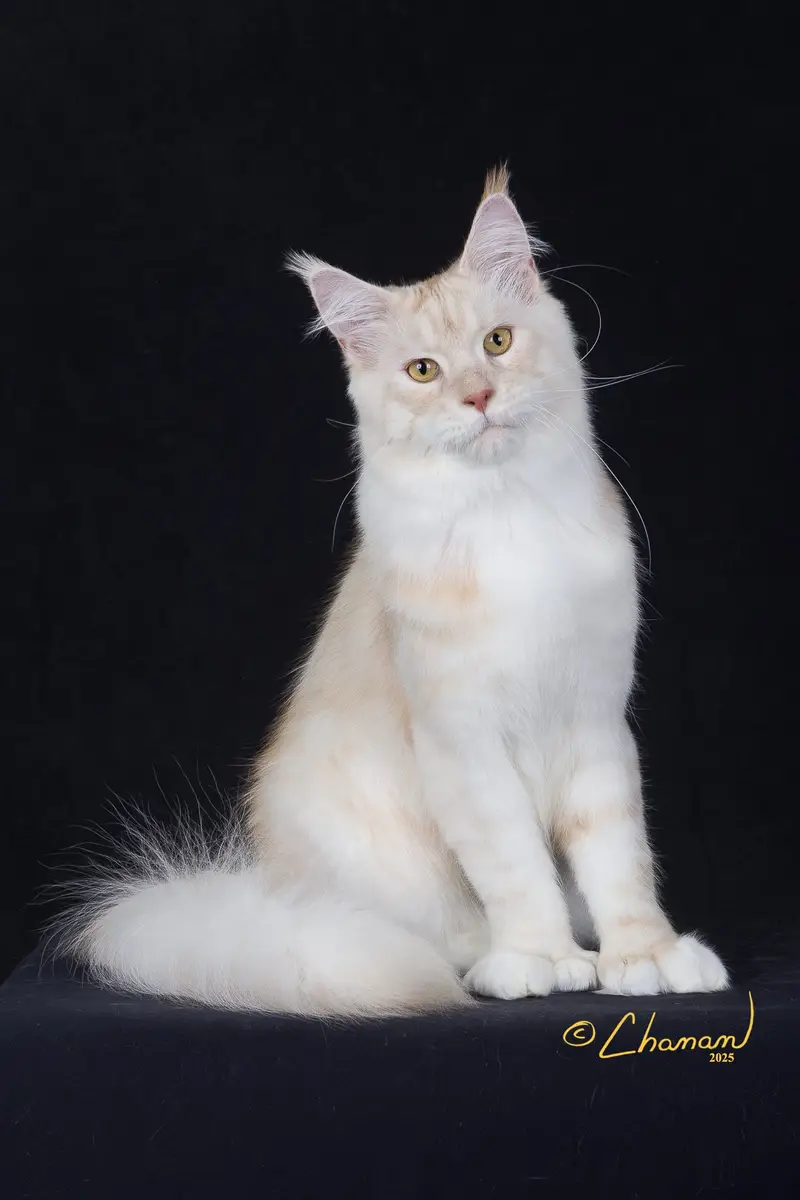
Everything to Know About Polydactyl Maine Coons
There’s nothing quite like the ever-present “genetics expert” in the
There’s nothing quite like the ever-present “genetics expert” in the comment section of social media – ready to declare and fight to the death defending their unfounded opinion that polydactyl cats are the result of inbreeding, and are somehow harmful to the Maine Coon breed.
We see it all the time: someone posts a picture or video of a gorgeous extra-toed kitten, and suddenly the internet’s honorary PhD holders in feline genetics come crawling out of the woodwork. But let’s set the record straight: polydactyly is not caused by inbreeding, nor is it unhealthy for Maine Coons. In fact, it’s a naturally occurring and completely harmless trait that’s been part of the breed since its earliest days.
Polydactyly (also called polydactylism) is the presence of extra toes. The word comes from the Greek: poly meaning “many” and dactyl meaning “fingers”, so it quite literally means “many fingers.” While most non-polydactyl (or “standard-pawed”) cats have 18 toes total, five on each front paw and four on each back, polydactyl Maine Coons can have as many as seven toes per paw, reaching a total of 28 toes! Other common terms for these cats are “double pawed” Maine Coons or our personal favorite, the “cats with thumbs”.
Polydactyly is caused by a harmless, dominant genetic trait. Still, you’ll often see these self-declared “genetics experts” in comment sections insisting that polydactyl cats are mutants, unhealthy, or the result of inbreeding – and therefore irresponsible to breed. But let’s pause for a moment and consider this: without genetic mutations, none of us would exist as we are today. Evolution is built on variation, and polydactyly is just one small, and perfectly benign, example of that.
In fact, many normal human traits stem from ancient genetic mutations. Hair color, eye color, and height are all influenced by genetic variation. Even traits we now view as normal, like red hair or blue eyes, originated as random genetic changes. Variation doesn’t mean something is broken; it means it’s unique. And sometimes, it’s absolutely beautiful.
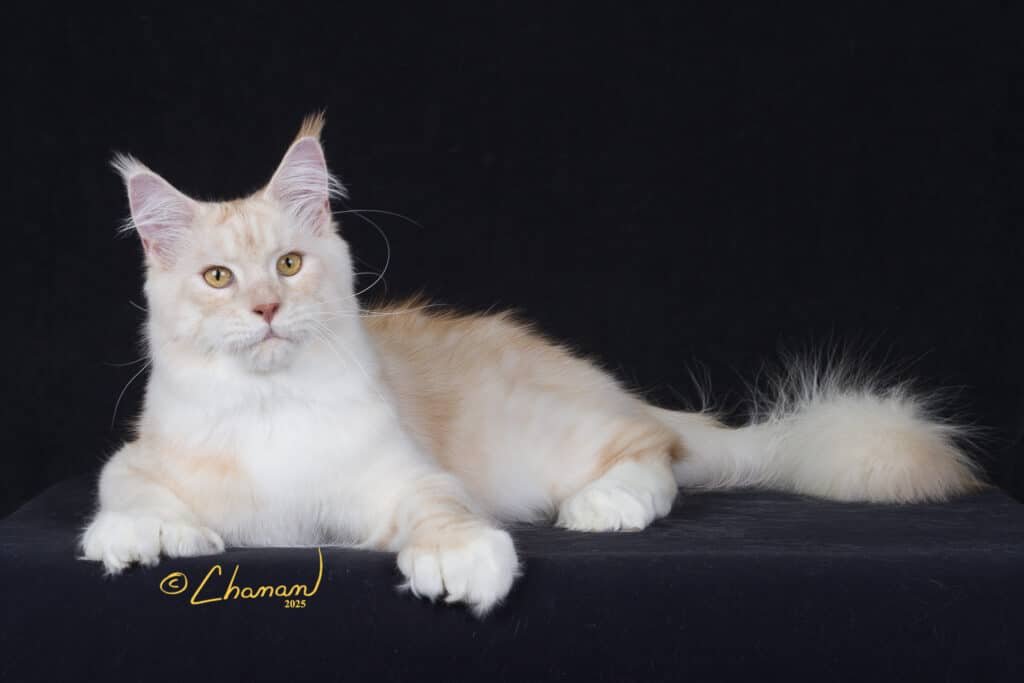
Polydactyly isn’t something created by breeders – it’s a naturally occurring genetic mutation that has been around for centuries.
Polydactyly has been documented in cat populations all over the world, particularly in coastal regions, where polydactyl cats were often found aboard ships. Sailors considered them good luck – and with their wide, mitten-like paws, these cats were excellent climbers and hunters in unsteady environments.
Although polydactyly can appear in any breed (or mixed breed), it became especially well known in early Maine Coon populations. In fact, it’s estimated that up to 40% of the original Maine Coons in New England were polydactyl. Their extra toes may have helped them walk through snow and grip rough barn surfaces – perfect traits for the hardy, working-cat lifestyle Maine Coons are known for.
Today, polydactyl Maine Coons are still admired by many breeders and families alike – who doesn’t love those thumb-like toes? Some breeding programs preserve the trait as part of the breed’s natural history, while others focus on show standards that may exclude it. Fortunately, organizations like TICA (The International Cat Association) officially recognize polydactyl Maine Coons in their breed registry, affirming that it’s a healthy and legitimate variation, not a defect.
So while polydactyly is not exclusive to Maine Coons, it remains a meaningful and historic part of the breed’s legacy.
I still remember the first time I posted a video of one of our polydactyl litters and saw the comment:
“Look at those extra toes…those cats are inbred.”
I was bewildered. Was that true? Had I missed something so critical about my own breeding program, even after being so careful to analyze pedigrees and ensure COI (coefficient of inbreeding) of each pairing remained minimal?
A quick search reassured me that polydactyly is a harmless dominant trait, not a result of inbreeding – but as the video gained traction, the comments kept rolling in. Some were polite; others not so much. But all echoed the same myth: that extra toes must mean poor genetics.
I couldn’t help but wonder where this belief had come from? It turns out the idea likely stems from old cultural warnings: “Don’t marry your cousin or your kids will have extra fingers.” These phrases were meant to discourage inbreeding in humans long before we had a real understanding of genetics, and somehow, that dinner-table folklore carried over into how people see animals too.
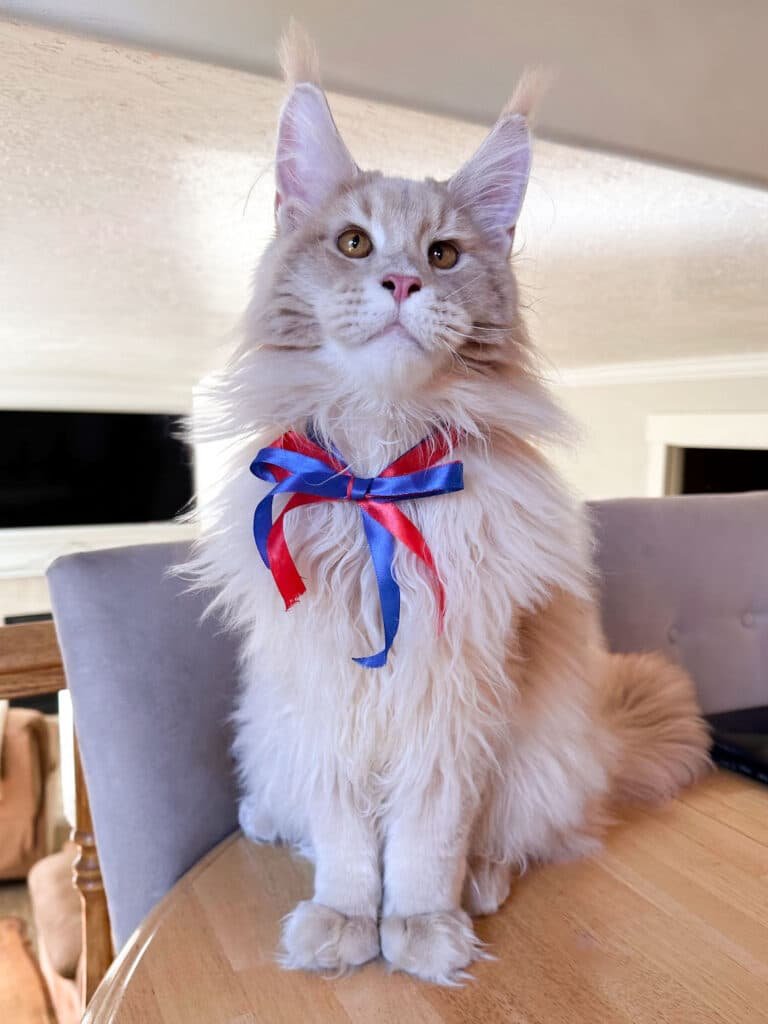
To know this, we need to have a genetic understanding of what exactly inbreeding does, and what it does not do. Inbreeding increases the chances that two copies of a recessive gene (a hidden gene that usually doesn’t cause problems on its own) will pair up and cause health issues or birth defects. This is why, historically, royal families that practiced generations of inbreeding often dealt with serious genetic problems – like hemophilia, jaw deformities, or infertility – because recessive conditions were passed down and became unavoidable.
But polydactyly doesn’t follow that pattern. It’s caused by a dominant gene, which only needs to come from one parent to be expressed. It’s not hidden or waiting to be “unmasked” by inbreeding. That means a polydactyl cat can come from two completely healthy, unrelated parents and still have extra toes. So no – extra toes aren’t a red flag. They’re just a harmless, naturally inherited trait that’s been part of Maine Coon history for generations.
Fun fact: with polydactyl being a dominant trait, if you breed a non-polydactyl Maine Coon to a heterozygous polydactyl Maine Coon, each kitten has exactly a 50% chance to be polydactyl!
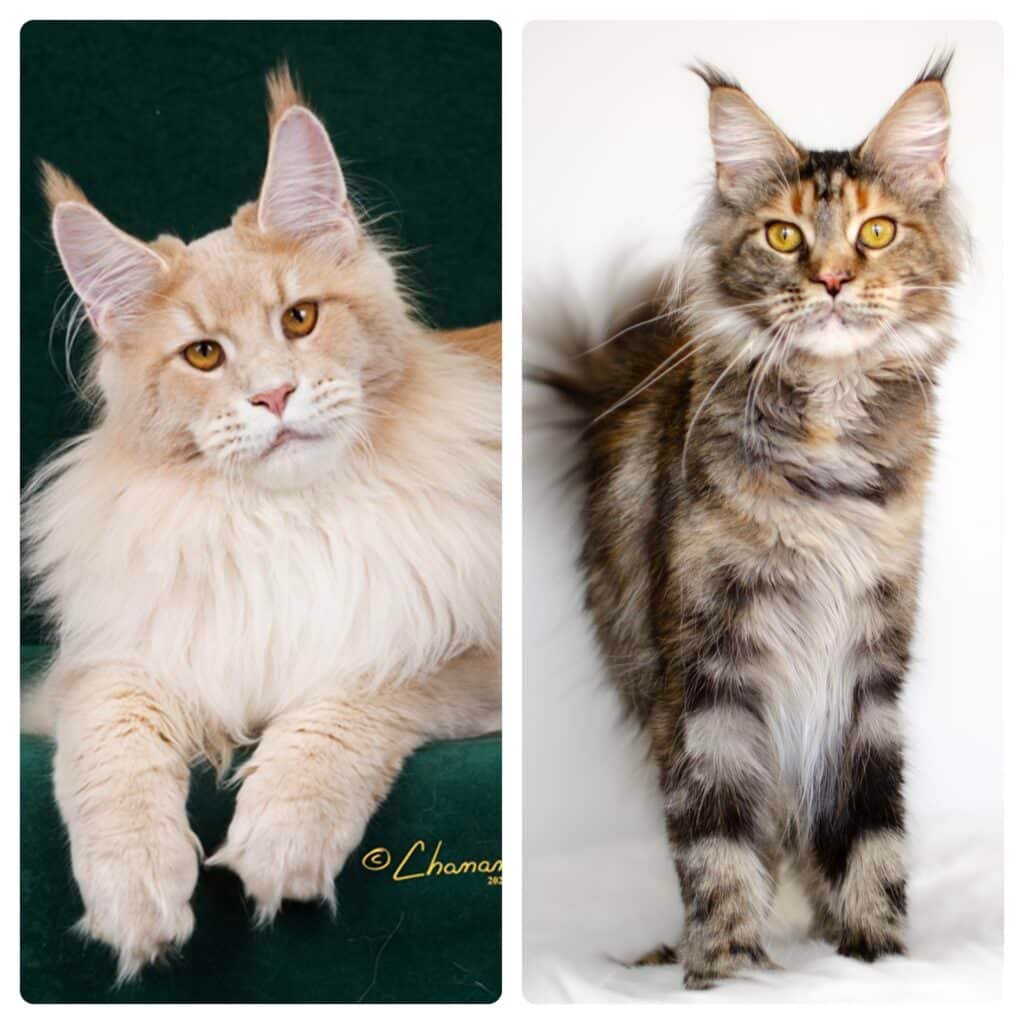
Polydactyly is simply another trait, like coat color or ear shape, and when ethically and responsibly bred, it causes no issues at all. Polydactyl Maine Coons are held to the same structural standards as non-polydactyl Maine Coons, with one important exception: the Maine Coon Polydactyl breed standard specifies that every toe should make contact with the ground when the cat walks.
Just like with standard-pawed Maine Coons, it’s essential that the legs remain straight and structurally sound, both front and back. There’s a common misconception among some breeders that polydactyl cats “naturally” have turned-in hind legs or a bend in the front – but this isn’t caused by the extra toes themselves. These issues are the result of poor breeding, not the presence of the polydactyl gene.
Aside from structure, the only minor challenge some polydactyl Maine Coons may face is keeping all of their nails properly worn down or trimmed – especially if they have six or seven toes per paw! With more digits comes more nails, and if any are poorly placed or grow at unusual angles, without management they can occasionally become overgrown or curl under.
However, just as you regularly care for your own nails, with routine nail maintenance this is easily managed and does not present any long-term health issues. When bred with care and maintained with basic grooming, polydactyl Maine Coons are just as healthy, agile, and long-lived as their standard-pawed counterparts, just with a little extra grip – we love a maine coon with extra toes!
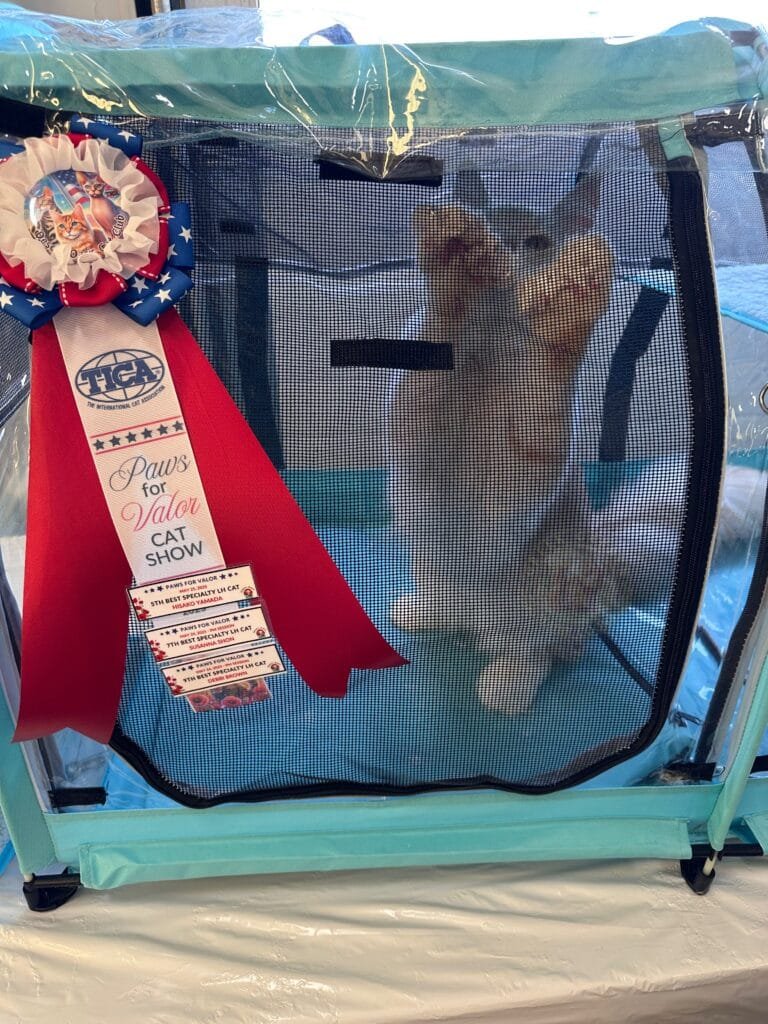
Clinical characterisation of polydactyly in Maine Coon cats – National Library of Medicine
Observations of Feline Polydactyly – PawPeds
The polydactile Maine Coon – Maine Coon International (not a scientific source, but a good read!)
Curious to meet our own polydactyl Maine Coons? View our Kings and Queens.

There’s nothing quite like the ever-present “genetics expert” in the
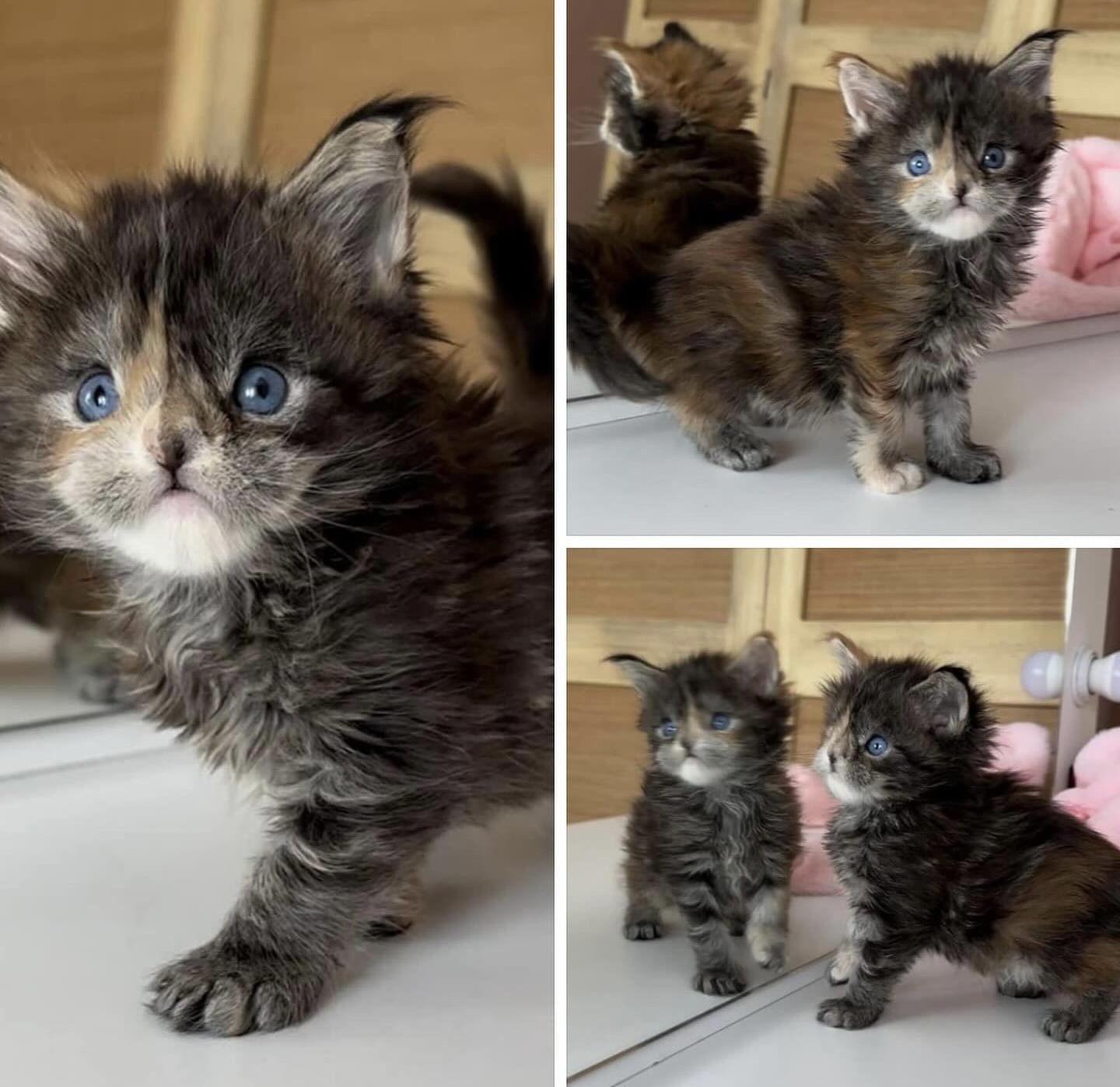
Obvious Waardenburg Syndrome-like traits in a Blue-Eyed Maine Coon Kitten